The San Antonio Valley, in southern Monterey County an hour south of Salinas and due east of Hearst Castle, is a trove of some of California’s rarest buildings—rammed earth and adobe buildings with interesting histories. Read more at the San Francisco Gate.
LEHM Conference Proceedings
The Dachverband Lehm e.V. announces the availability of conference proceedings from the 4th and 5th International Conferences on Building with Earth from 2004 and 2008.
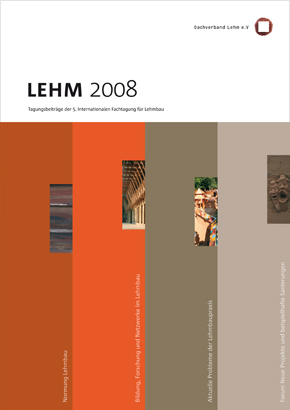
LEHM 2008: Conference proceedings
The conference proceedings were published on the occasion of the 5th international conference on building with earth in Leipzig. The book contains all papers and posters presented at the conference in both English and German languages. Central topics include earth building norms and regulations, education and training in earth building, current research into building with earth, information networks in earth building, current problems in earthen building practice and new projects and exemplary conversions.
Published by: Dachverband Lehm e.V., 288 pages with illustrations
ISBN 978-3-00-025956-2, October 2008, German and English
Price: 50 Euro + P&P
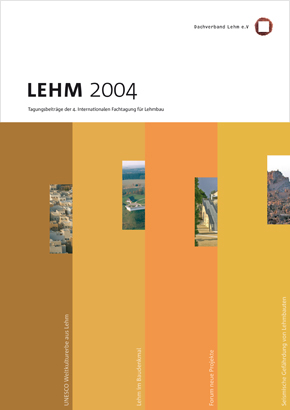
LEHM 2004: Conference proceedings
The conference proceedings were published on the occasion of the 4th international conference on building with earth in Leipzig. The book contains all papers and posters presented at the conference in both English and German languages. Central topics include UNESCO world heritage, earth in building conservation, new projects and reducing the seismic vulnerability of earthen buildings.
Published by : Dachverband Lehm e.V., ISBN 3 00 014864 7, 324 pages with illustrations, October 2004, German and English.
Price: 35 Euro + P&P
The conference proceedings can be ordered directly from the Dachverband Lehm e.V.
Dachverband Lehm e.V.
Postfach 1172
99409 Weimar
Germany
dvl@dachverband-lehm.de
www.dachverband-lehm.de/shop/index_gb.html
Napa Valley Rammed Earth House
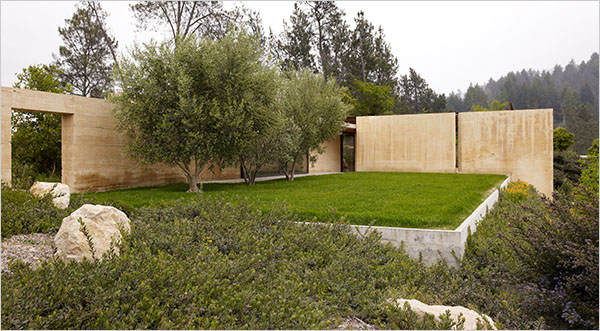
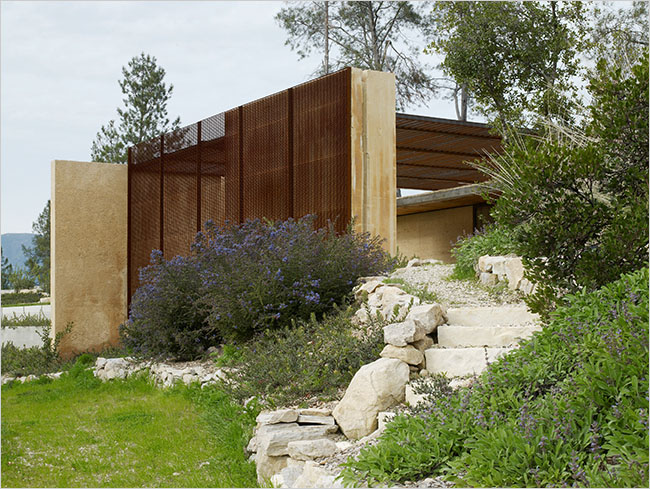
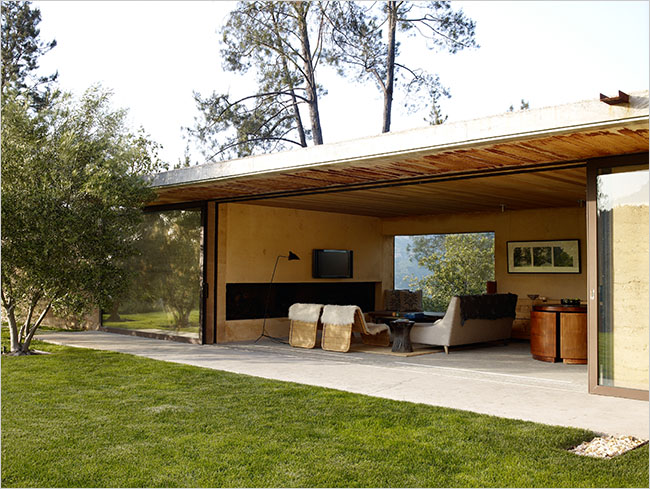
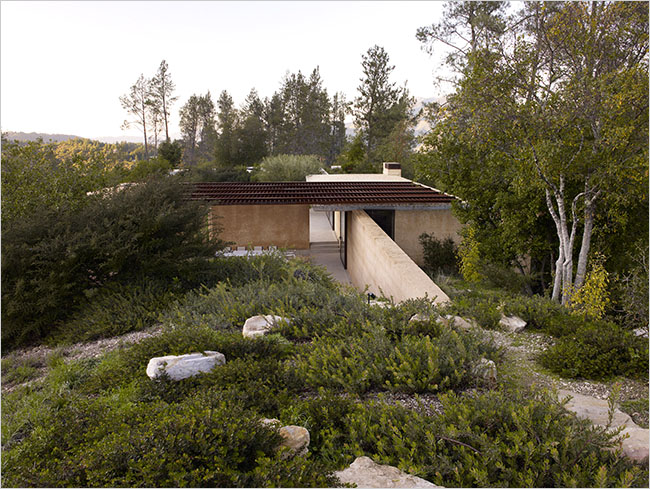
Photos: Marion Brenner for The New York Times
THE first clue that a visitor to Tatwina and Richard Lee’s hilltop property is headed somewhere unusual is the approach, as it’s known in landscape design parlance. The nearly half-mile of dusty road winds dramatically up an intermediary ridge of the Diamond Mountains above Napa Valley. Each turn raises the expectation that the house will soon appear, as houses normally do, but even when the gravel parking area at the top is finally reached, there’s no sign of a house or a garden, just a simple path of crushed stone edged with mounds of green-gray Sonoma sage and California lilac. This, it turns out, leads over a rise to a low, rammed-earth house hidden on the other side.
The house — really a line of four one-story buildings made of earth, concrete and steel and designed by Steven Harris Architects— sits in the depression between two knolls on a narrow, rocky peninsula, with steep, pine-covered hills swooping down on three sides to vineyards famous for their cabernet sauvignon.
Gando School Extension
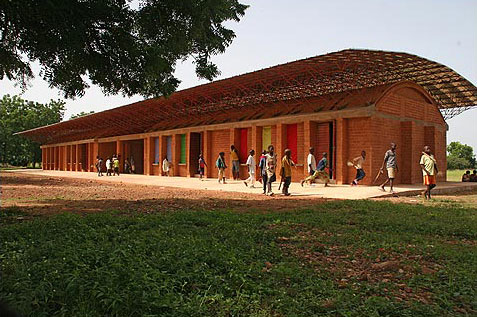
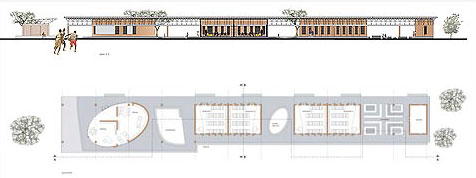

Following the success of his design for a Primary School in Burkina Faso, which prompted growing numbers of students attending the school, architect Diébédo Francis Kéré has completed an extension to the school using many of the same techniques and materials, but with an innovative new compressed earth vault protected by an airy vaulted metal canopy. In addition to classrooms, the extension also houses a kitchen and library.
Toxic Wall

The Toxicwall, designed by Rensselaer Polytechnic Institute architecture student Henry Louis Miller, is a response to the bullying, isolationist tone (as he sees it) creeping into the national debate on immigration. It’s a simple idea. Collect earth from polluted brownsites. Use it to make toxic bricks. Form these bricks into a wall along the nation’s southern border. Prevent illegal immigrants from crossing by forcing them to risk contamination.
To maintain the toxicity of the brick, it seems that the bricks are likely mud-brick as vitrification of fired brick might reduce the effect. The toxic mud brick wall seems equally as harmful as architect Antoine Predock’s rammed earth border wall.
The Earthen Architecture Initiative
The Earthen Architecture Initiative (EAI) seeks to further the conservation of earthen architecture through international activities and institutional partnerships. Advancing the discipline of earthen conservation is the organizing principle for all of the EAI’s activities—which include model projects that improve the way conservation interventions are carried out in different parts of the world, pursuing research that addresses unanswered questions in the field of earthen conservation, and disseminating information regarding appropriate conservation interventions on historic buildings, settlements, and archaeological sites composed of earthen materials.
2007 Aga Khan Award for Architecture – Shibam, Yemen
The Rehabilitation of the City of Shibam is part of a project that focuses on the preservation of this unique place as a living community, with architectural restoration integrated into the creation of new economic and social structures. The Award recipients are the Yemeni government and its cultural agencies, the German Technical Cooperation (GTZ) and the community of Shibam.
Earth Architecture in the Australian News
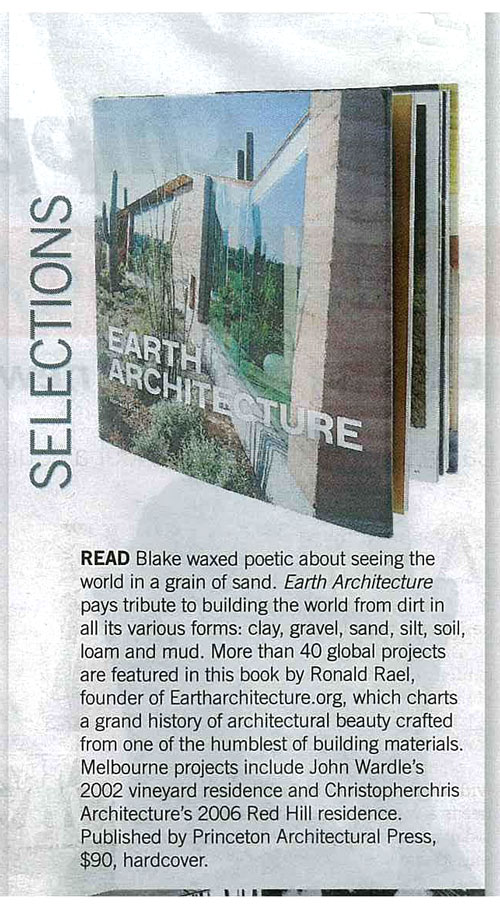
A review of Earth Architecture from Australian The Age newspaper.
Rammed Earth By Design
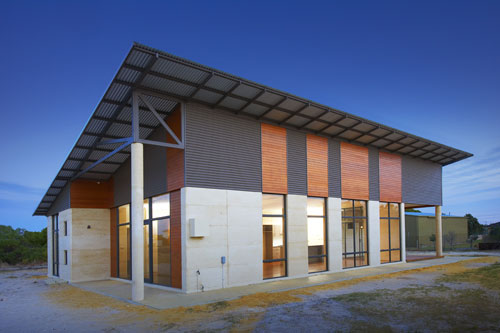
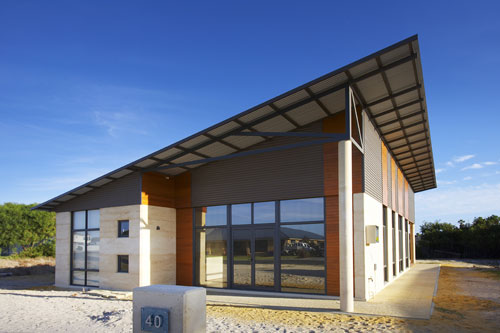
Rammed Earth By Design is a rammed earth building company located in Western Australia that provides a complete experience in fully finished residential home design, administration and construction. They offer over 50 predesigned home packages that they can constructed throughout Australia and globally.
Earth Building UK
You are invited to the first full meeting of Earth Building UK, a new national organisation established to represent, support and promote earth building in the UK. This is an opportunity to influence EBUK’s organisation and operation from its beginning. EBUK’s first meeting will take place at the University of Bath on Friday 16th January 2009. Further details, including the process for registering, can be found here: http://www.bath.ac.uk/ace/ebuk-meeting/. Aseries of high quality presentations are lined up as part of the day. For more information contact:
Enrico Fodde
Lecturer
BRE Centre for Innovative Construction Materials
Department of Architecture and Civil Engineering
University of Bath
Bath BA2 7AY
UK
Tel: +44 (0) 1225 383185
Fax: +44 (0) 1225 384495
Email: E.Fodde@bath.ac.uk
http://www.bath.ac.uk/ace/
Pete Walker,
Director BRE Centre for Innovative Construction Materials,
Dept. Architecture & Civil Engineering,
University of Bath,
Bath BA2 7AY,
UK.
Tel: 01225 386646
Fax: 01225 386691
http://www.bath.ac.uk/bre
